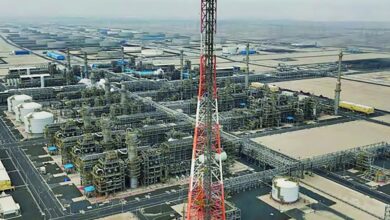
According to a recent report by the Institute of International Finance, the Gulf Cooperation Council countries have managed to navigate the global scene and the conflict in the Middle East very well, with Kuwait expected to maintain large current account surpluses in 2025.
However, large current account and general budget surpluses, which previously shielded against economic shocks, are diminishing due to lower oil revenues and high import costs associated with efforts to diversify the economy away from oil.
Overall growth, including both hydrocarbon and non-hydrocarbon sectors, is expected to recover from 0.9 percent in 2024 to 3.5 percent in 2025, with oil production cuts gradually tapering off after the first quarter of 2025.
Significant progress has been made in improving the business climate, particularly in Saudi Arabia and the UAE, which together account for 75 percent of GCC GDP.
There has also been progress in diversifying these economies away from oil, as indicated by the continued decline in the energy sector’s contribution to real GDP. Digitization and artificial intelligence continue to play a key role in the economic diversification strategy.
Economic links
On the other hand, the Institute of Finance stated that given the close economic ties between the Gulf states and the dollar, a Trump victory in the presidential elections would have repercussions for the region, including the geopolitical situation, oil prices, and interest rates.
Nonetheless, reaching a peaceful solution to the ongoing conflict in the Middle East and North Africa region would be welcomed by all Gulf States. The ongoing threat of regional escalation, especially with regard to Iran, has negatively impacted local and foreign investment sentiment.
According to the report, the Gulf countries will also be affected by Trump’s decisions during his presidency and their impact on oil prices. Trump has been a strong supporter of US energy independence and has consistently attacked the shift to green energy, which could lead to increased dependence on crude oil in America.
It could also stimulate oil production in the United States, thus increasing global supply by 2025 and possibly lowering oil prices. In addition, the Federal Reserve could raise interest rates to combat inflation caused by Trump’s policies, which would strengthen the value of the dollar and potentially reduce the current account surplus of the region’s countries.
Average price
Assuming an average oil price of $70 per barrel in 2025, compared to $80 in 2024, the combined current account surplus of the Gulf countries will narrow from $99 billion in 2024 to $38 billion in 2025, or 1.7 percent of GDP.
The UAE, Qatar, and Kuwait are expected to maintain large current account surpluses, albeit at a lower level than the large surpluses recorded in 2023-24. Meanwhile, Saudi Arabia will again record a fiscal deficit of 2.5 percent of GDP, which is manageable given its low debt and ample financial reserves.
In the meantime, Gulf countries pose a much lower risk of sovereign default than most emerging markets. Their financial stability is reflected in their strong credit ratings and large non-resident capital inflows, which are expected to reach $136 billion in 2025 (6.2 percent of regional GDP).
This trend is evident in the sharp increase in hard currency bond issuances during the first three quarters of 2024, surpassing the total for the whole of 2023.
Capital flows
The report expected the Gulf countries to continue their trend towards capital outflows, even as current account surpluses shrink. It is likely that outward investments, especially from Gulf sovereign wealth funds, will dominate inward foreign direct investment into their countries.
Foreign direct investment flows to the region will constitute 40 percent of total non-resident flows. Investments in sustainable sectors, especially renewable energy, are witnessing increasing interest.
Moreover, with a projected current account surplus, net government foreign assets could rise to $4 trillion by the end of 2025, equivalent to 150 percent of GDP.
Nearly two-thirds of these assets are managed by sovereign wealth funds, which invest in global equities and fixed income. The rest is held as official reserves, primarily in liquid assets such as bank deposits and U.S. Treasuries. Demand for high-quality assets from the GCC continues to be strong, supported by stable currencies, low debt, and large fiscal reserves.
Future outlook
The outlook for the GCC economies faces minimal risks. Although geopolitical tensions in the region persist, they are not expected to have a significant negative impact on economic performance.
However, a prolonged period of low oil prices, particularly below the $70 per barrel threshold, could potentially put pressure on government finances in the medium term. Fortunately, large reserves should provide a fiscal buffer against such risks in the near term.
Global growth to fall to 2.7 percent this year
The Institute of International Finance expects global growth to slow from 2.9 percent in 2024 to 2.7 percent in 2025, while emerging markets are expected to grow by 3.8 percent next year, compared with 4 percent in 2024 and 4.3 percent in 2023.
These forecasts reflect the potential outcomes of the new US administration’s policies, such as trade, fiscal measures, and immigration, as well as heightened geopolitical risks. While these policies have yet to be implemented, their expected impact could significantly shape the global economic landscape if they are realized.
Source: Al Rai













